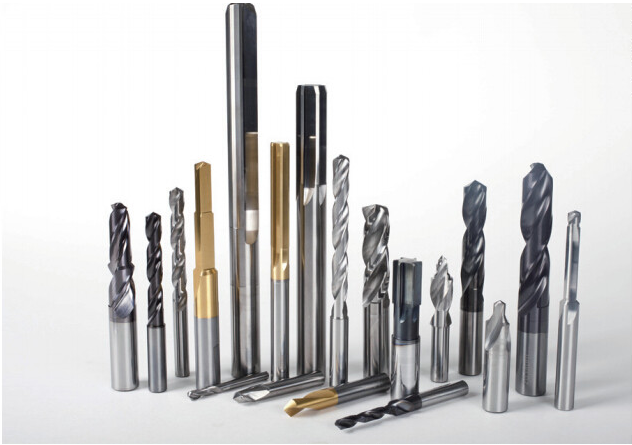The unique advantages of carbide end mills in machining
June 21,2022
The replaceable head solid carbide end mill has a great breakthrough in terms of cutter body structure, machining capacity, machining efficiency, machining quality and economy compared with the previous cutter types.
In terms of overall structure, end mills are roughly divided into integral end mills and end mills with indexable inserts. In order to meet the processing needs of the two types of end mills, each company designs and manufactures a series of products with different sizes of cutter heads, structural shapes, helix angles and number of teeth. In the past, the material of solid end mills was mainly high-speed steel. In order to improve processing efficiency and processing quality, solid carbide end mills with higher hardness, more wear resistance, better rigidity and higher machining accuracy are more and more widely used. Because it is a solid carbide, the price is relatively high, especially the large and thick diameter. So just like turning tools and face milling cutters, end mills are also equipped with indexable inserts to meet the processing requirements. The indexable inserts can be made into a variety of end mills with different functions.

Small mold cavities and small and complex forming surfaces of parts are mainly machined with several different solid end mills. For economical reasons of large molds and large parts, end mills with indexable inserts are often used for rough machining, and integral end mills with high precision, expensive and small diameter are used for finishing. At present, the diameter of solid carbide end mills is about Ф0.1~Ф25 (high-speed steel can be made thicker, even up to Ф60 or more). End mills with indexable inserts can be Ф160 or larger as required. However, its minimum size is limited by the use of smaller inserts, thinner screws holding the inserts, and insufficient strength. Generally the minimum diameter is Ф10. The function is simple, and in some cases, end mills that only process chamfers may be made thinner, or even Φ4.
Due to the thickness of end mills with indexable inserts, in order to save the shank, many companies have developed replaceable heads with indexable inserts. If the cutter head is damaged, it can continue to be used by replacing a cutter head. Due to the same connection method and size, end mill heads with other processing functions can also be replaced to process various shapes and surfaces of parts, so as to achieve process concentration, complete or most of all processing at one time, greatly improving work efficiency and various Surface mutual position accuracy.
The cutter head of the indexable insert can be replaced. After the expensive solid carbide end mill is worn out, it must be scrapped after several regrinding. This is really a huge waste of resources. For this reason, Mitsubishi has pioneered the development of a solid carbide end mill that can replace the cutter head, which is of great significance and is worthy of adoption, reference and promotion. This world's first iMX series of solid end mill shank + replaceable solid carbide tip, the tool head and the shank are equipped with a structure that can form a bolt and nut. The bolt and nut structure is made of steel and is impact-resistant. , Good toughness, can play the role of replacement connection. The centering and positioning of the two is achieved by the cones, conical holes and their shoulder surfaces and end surfaces of the two cemented carbide parts. This is a highly rigid two-sided constraint positioning method. The elastic modulus of the steel shank is 2 × 104, and the elastic modulus of the carbide shank is 6 × 104. Except that the connecting part is steel, the supporting and positioning parts are completely cemented carbide parts, so it can be seen that the rigidity has been greatly improved. , Because it is a two-body combination, the rigidity is slightly lower than that of the solid carbide end mill, but the rigidity is much higher than that of other structures, about 30%. For a secure connection, the different diameter end mills specify the tightening torque values that must be achieved. The two bodies are assembled together, and the radial runout accuracy can reach 0.015 when Φ10~Φ20. When Ф20, it can also be within 0.02. The axial accuracy of cutter head replacement can reach ±0.02.